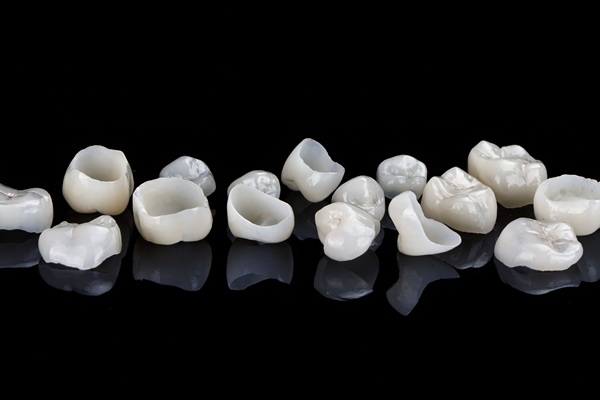Can a Dental Filling Be Replaced?

The lifespan of a dental filling is limited. Due to normal wear and tear, a replacement may be necessary. When a filling deteriorates or comes loose, your tooth loses the protection that it has against injury and decay and will be more vulnerable to dangerous bacteria. To avoid more dental issues in the future, you should be able to identify the symptoms that your tooth filling needs to be replaced.
The lifespan of dental filling
Dental fillings may last a long time, but they are not indestructible. Due to the frequent pressure from eating and drinking and tooth clenching and grinding, all dental fillings will eventually require replacement.
Fillings may deteriorate, chip, crack, or even fall out with time. When a filling fails, it provides an open place for bacteria and food to enter. Therefore, tooth decay may form underneath the filling or where the filling used to be. Without treatment, dental decay may affect the dental pulp, which contains the tooth's nerve and blood supply, resulting in excruciating pain and ultimately the need for a root canal or tooth extraction.
When to replace a dental filling
Regular dental examinations may help discover problems with existing fillings in the early stages. However, if it is not time for another dental appointment and there are concerns about the state of the dental filling, some of the signs to note include:
Tooth sensitivity
One of the most prevalent indicators that a filling needs replacement is tooth sensitivity. Due to the broken or deteriorated filling, the tooth will become more sensitive to hot, cold, and sweet foods. Patients may also experience slight pain when touching their teeth with their fingers, toothbrush, or other dental devices. Also, they might feel a slight pressure in the tooth when chewing or biting, indicating that the filling or dental pulp is injured.
Sharp pain
Sharp and throbbing pain generally means something is wrong with the tooth. One might experience the discomfort momentarily when eating or drinking. It might even happen without chewing. When a filling has to be replaced, breathing in cold winter air, for example, might cause tooth discomfort or sensitivity.
Inflammation of the dental pulp is a common source of toothaches and pains. When in pain, go to the dentist right away. If the infected dental pulp is left untreated for an extended period, it will result in permanent necrosis, or a dead tooth.
Noticeable damage
It may be possible to see physical damage to the filling or tooth in addition to the pain and sensitivity. Look for holes and dark patches on the teeth and fractured, cracked, or missing fillings.
Loose filling
One common reason for replacing a filling is breakage or loss. Replacing it as soon as possible is critical to avoid the buildup of germs in the tooth. Many people may not notice that their filling is loose until they come in for normal dental cleaning.
The type of filling
The frequency of filling replacement varies depending on the kind of filling. Tooth-colored resin fillings are popular but need to be replaced more often. It is also not uncommon for patients to need a new resin set every seven to 10 years or so. Due to their long lifespan of 15 years on average, silver or amalgam fillings are also popular.
Gold fillings are not commonly used due to their higher cost, but they last the longest. Gold fillings may last up to 30 years before they need replacement, making them an excellent investment for many patients. For each person, these time periods are different. Someone with a resin filling may expect it to last 15 years, while someone else will need to have a new one after seven years. Even a person's diet and daily behaviors might affect the life expectancy of a filling.
The frequency of filling replacement
There is no specific number as to how often a filling needs to be replaced. It becomes less feasible when the hole is too big. A tooth loses its strength when it has more filling material than natural tooth material. The best way to prevent further damage to the tooth is with one of the many available restorative options, such as a dental crown.
Talk to the dentist
Your dentist can check if you require a replacement filling. During a dental checkup, your dentist will use an explorer to look for worn patches around the filling's border. They will also check for worn fillings or cracks. Dental X-rays help reveal decays around the filling, which may not be immediately visible. Book a dental appointment, and get your fillings replaced as soon as possible to prevent further issues, including discomfort, tooth decay, and infection.
Request an appointment here: https://smilesdental.com or call Smiles Dental Care at (650) 563-1180 for an appointment in our Mountain View office.
Check out what others are saying about our dental services on Yelp: Dental Filling in Mountain View, CA.
Recent Posts
Cavities, also known as caries or tooth decay, form when plaque eats away at the enamel that covers the teeth’s outer surfaces, so it is essential to see the dentist immediately for a dental filling or other treatment alternatives if you suspect cavities on your teeth. Cavities may spread and harm the sensitive tissue and…
You might be curious about how metal-free fillings are different than traditional fillings. Your dentist may suggest a metal-free filling instead of one with metal for many reasons. Or you might prefer the look of a metal-free filling. There are many reasons, and knowing more about metal-free fillings can help you decide which is right…
If you have a cavity on your front teeth, you are likely interested in metal-free fillings. You want something that matches your natural teeth, so no one knows you have a dental filling. You are unsure if these fillings can be used for front teeth, though. Get the details so that you will know how…
Cosmetic dental services have a collection of treatments that can target specific dental issues. Your dentist can assess the issue or issues first. Recommending procedures like dental bonding can give a fast and effective solution. Here are the details on how dental bonding can serve as one of the quickest, most effective cosmetic dental services…


